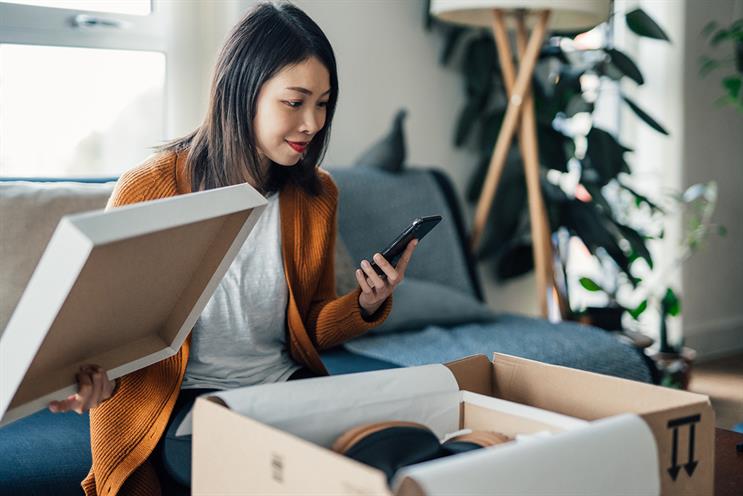
The increase in hybrid working over the past two years has meant many people’s personal and work lives have blurred – fuelling a wave of behaviour changes in the way consumers search and shop for products online during their working day.
Whether booking a holiday during their coffee break or renewing their car insurance between meetings, remote workers are taking more time out to shop for products and services in ways they wouldn’t have dreamed of before the pandemic.
According to a report by Forrester, commissioned by Microsoft, 60% of respondents said they typically mix work and personal tasks in their to-do lists during work hours, and 59% said they consider work and personal tasks to be of equal importance during the day.
“We know that work and home have clashed, and the amount of time people spend researching products during the working day has increased,” said Theo Theodorou, Microsoft Advertising’s UK managing director, who was speaking during a panel discussion at Campaign’s Media360 event.
“It’s really about a reclassification of boundaries, as well as how we use our devices,” he said. “People talk about the importance of mobile-first marketing strategies, but if you think of your work laptop, that is now becoming the main place where research on purchases takes place.” That research often includes big-ticket purchases as well as travel, financial planning and home improvements.
Amir Ali, strategy manager at Mitchells & Butlers, said: “When you are looking at luxury items like motorbikes and cars, you want a 360-degree view. You can’t get that whole experience on your phone, but people at work are on big screens.”
Factors driving these changes in consumer behaviour include convenience and the need to take breaks from work. “People will take a moment between tasks to get things done, as they work longer hours at home,” said Alex Neilson, media manager, CPG Engagement at Tesco. “Or they can pop to the shops and take a work call on the way.”
Paul Constantine, marketing director at Comparethemarket.com, agreed: “The biggest difference is: when you were in the office, if you thought of a personal task you needed to do, you wouldn’t do it instantly – you’d save it for the weekends. Whereas you’re much more comfortable now about doing it straight away.” He also noted that online shopping on Sundays is now much quieter, as people prefer to keep their precious weekends free of tasks such as updating their insurance.
The panel agreed that working from home will continue to drive the online shopping experience forward in a myriad of ways. Having multiple screens set up at home will make it easier to multitask, for example, while making it easy to return items to the post office is more of a concern than ever.
This is all good news for online-savvy brands. As consumer behaviour evolves, however, marketers who are not keeping up with these new shopping habits could be at risk of falling behind.
Understanding your consumer personas is key, suggested Theo Theodorou. “For example, luxury shoppers spent more money online during the pandemic than other personas, and they research and browse far more,” he said. “But they expect the same service online as they would get in a bricks-and-mortar setting, which is difficult to deliver – so it’s about giving them the same experience.”
According to Forrester’s survey, brands are having to upgrade their capabilities for online advertising to align with customer expectations. Respondents said social (81%), search (75%), online video (61%) and online display (58%) have all become more important to their online marketing strategy.
“Shoppers are also increasingly voting with their wallets by purchasing from brands that align with their values,” said Theodorou. “So you need to tell stories about what you believe in, and figure out the right sites, devices and creative to talk to them.”
Nic Thomas, marketing director at Nissan, noted that marketers are relying increasingly on third-party information. “Consumers are not interested in what I tell them about a car, but what Fully Charged or Autocar or the latest YouTuber tells them. So we have got to make sure we are present in all of those spaces.”
But all of this assumes the trend for hybrid working will continue indefinitely. Samuel Day, chief marketing officer at Confused.com, said marketers need to be mindful that employees who’ve returned to the office on a more regular basis may revert to pre-pandemic behaviour. “Every time you think you are getting some stability, it changes,” he said. “Recession pressures could see presenteeism rise and people will come into the office more often again. There could be a tipping point coming.”
For the moment, Forrester’s research shows that 44% of respondents expect the number of online purchases they make during work time to increase in the next 12 months. Theodorou said that knowing who you are talking to, on what device, and at what time will be crucial for marketers: “Online consumers are ‘snacking’ throughout the day in those spare five or 10 minutes that they have between work and play – that’s the moment to grab them.”



